Solución de red de videovigilancia de Huawei
Video surveillance can be used to help protect the safety of human life and property. As such, video surveillance technologies have been introduced into all aspects of life, such as financial institutions, business organizations, residential communities, and industrial production. At the same time, the development of information technology is driving video surveillance technologies. Over more than 20 years, video surveillance systems have undergone significant changes, shifting from the earliest analog surveillance to digital surveillance (very popular in the past few years) to the present burgeoning IP video surveillance.
The network which is the bearer of the video surveillance business, its importance is self-evident. Huawei provides the video surveillance network solution includes abundant and flexible access modes (LAN, WLAN and xPON access) to match all kinds of scenarios, and make scenario based video surveillance network design to build cost-effective, high reliability network which provide high performance video surveillance business.
Video surveillance can be used to help protect the safety of human life and property. As such, video surveillance technologies have been introduced into all aspects of life, such as financial institutions, business organizations, residential communities, and industrial production.
At the same time, the development of information technology is driving video surveillance technologies. Over more than 20 years, video surveillance systems have undergone significant changes, shifting from the earliest analog surveillance to digital surveillance (very popular in the past few years) to the present burgeoning IP video surveillance. From a technical perspective, the development path for video surveillance systems is characterized by the systems in three phases of the technology: closed-circuit television (CCTV), digital video recorder (DVR), and IP video surveillance (IPVS).
After years of development and application, IP video surveillance technologies are maturing. However, there are still some challenges and issues, for example:
- Video surveillance has grown increasingly popular around the world. As a result, video surveillance has extended from office environments to production environments, from indoor places to outdoor places, and from local surveillance to remote surveillance. These changes make it more complicated to deploy video surveillance services, because the video surveillance network has to adapt to multiple access scenarios and even to harsh environments.
- A high quality of service (QoS) must be ensured because of the sensitive nature of video surveillance. Network designers have to rethink how to guarantee the reliability, continuity, and high quality of video surveillance.
- Video surveillance data is highly confidential and must be well protected. However, when the IP video surveillance network interconnects with other service systems, the peripheral unit (PU) and back-end portions of this network are exposed to other users, which brings security risks.
To ensure the operation of video surveillance services, a highly reliable, scalable, and easy-to-deploy bearer network must be built. In addition, this network must provide strong QoS assurance and security protection.
Against this backdrop, Huawei has unveiled its video surveillance network solution, helping customers address the challenges and issues they face. This solution is built on a field-proven, highly reliable network scheme and a comprehensive security protection system to deliver premium video surveillance services. In addition, this solution supports multiple access modes, which makes the entire system easy to deploy and expand while reducing the total cost of ownership (TCO) for customers.

1 Overview
Huawei video surveillance network solution consists of the following three parts:
- PU system: this data collection system contains video collection cameras and an access network. The access network connects cameras to the video surveillance network. The access network supports different scenarios in three access modes: LAN, WLAN, and xPON.
- Data transmission system: this system transmits video data to the local server or the remote monitoring and application center. This data transmission network includes the local IP network and possibly a metropolitan area network (MAN) or wide area network (WAN).
- Storage and application system: this system stores video data, forwards video streams, and implements intelligent service applications, such as alarm linkage.
2 Multiple Network Access Modes
This section focuses on the network access and data transmission features of Huawei Video Surveillance Network solution.
With its expertise and solid track record in the information and communications technology (ICT) field, Huawei is able to provide a range of video surveillance network access technologies, including LAN, WLAN, and xPON and their combinations. The customer's site requirements determine which access mode to select.
2.1 LAN Access
The LAN access network is easy to maintain. This network is suitable for places that can easily accommodate cable routing and require high-density video surveillance, such as a campus, commercial buildings, and stadiums.
In the LAN access network for video surveillance, analog cameras connect to the network switches through digital video recorders/digital video servers (DVRs/DVSs) or encoders (for converting analog signals into digital signals). Unlike analog cameras, digital cameras can directly connect to switches through Ethernet ports. The switch network supports multiple topology structures, such as tree, star, and ring, to meet diverse scenarios.
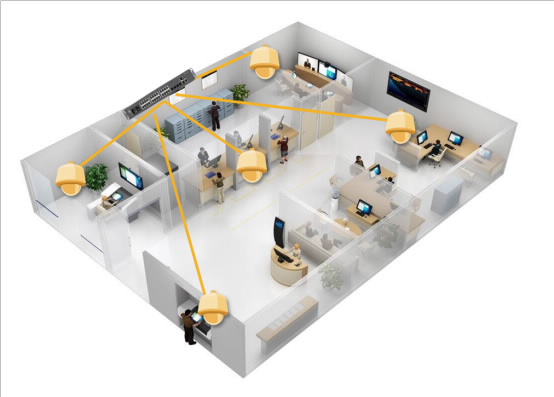
PoE Switch
To facilitate cable routing and reduce deployment costs, a power over Ethernet (PoE) switch can be used to supply power to terminal devices. Huawei PoE switch is a good choice for the customer. Huawei PoE switch supports 802.3af and 802.3at standards. Each port of the switch provides a maximum of 30W power, fully meeting the power demand of cameras. Huawei PoE switch also supports time-based and on-demand power supply to manage supply more intelligently.
Industrial Scenario
As more IT technologies are used in enterprises, more video surveillance systems are deployed in their production fields. Various industries, such as coal, electric power, petrochemistry, and steel, exist in harsh environments with heavy dust, high temperature, high pressure, and more vulnerability to lightning strikes. These harsh environments pose huge challenges to the network devices. Industrial-grade switches must be used to withstand the extreme environments.
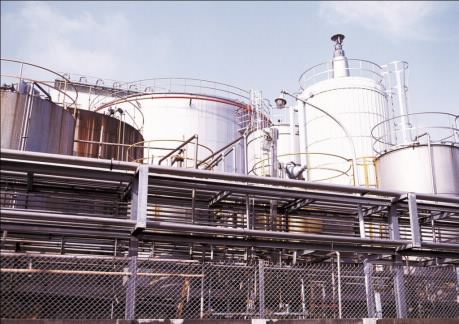
Huawei industrial switches withstand extreme environments with their impressive range of hardware features:
- Wide operating temperature range from –40°C to +75°C
- One-channel relay alarm
- Strong anti-electromagnetic interference
- Anti-dust, fanless design
- Protection class up to IP67
Apart from these hardware features, Huawei industrial switches also support diverse software features, for example:
- Support for virtual local area network (VLAN)/GARP VLAN Registration Protocol (GVRP), QoS, Internet Group Management Protocol (IGMP), Snooping/Query, and Link Aggregation Control Protocol (LACP)
- IPv6 support
- Plentiful security features
- Multiple diagnosis modes
- Port mirroring
- Remote network monitoring (RMON)
- Traps
- Email alarm indicator
- Redundancy ring network protocol (successful self-healing within 10 ms), well suited for high-reliability video surveillance demands in industrial areas
2.2 WLAN Access
WLAN has various advantages, such as convenient deployment, short construction period, and easy scalability. With the development of technology and the industry chain, WLAN has become a widespread wireless video surveillance solution thanks to its innate advantages.
When used in tandem with switches, WLAN can provide wireless video surveillance access to commercial buildings and office environments. In addition, WLAN can use the bridging mode to implement remote video surveillance at long distances for places where routing cables is inconvenient.
At present, more and more video surveillance terminals support Wi-Fi and wireless cameras, and DVSs can access the network directly or indirectly through WLAN customer premises equipment (CPE). (The WLAN CPE converts wired signals into wireless signals.) This approach cuts down on deployment costs.
With technology development and the increase in network speed, Wi-Fi access now can fulfill the bandwidth demands of video surveillance. Furthermore, network resources can even be shared by video surveillance services and other services at the same time, which further reduces deployment costs. Video surveillance services can be isolated from other services using VLAN technology.
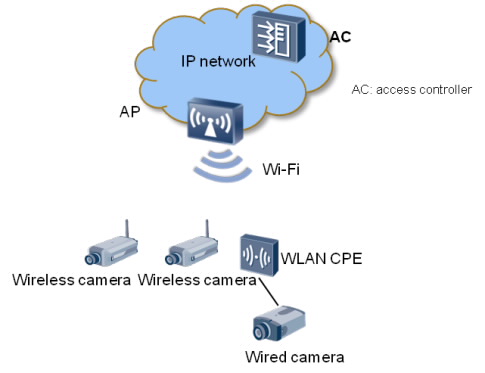
To support WLAN access, Huawei has released two indoor settled access point (AP) devices: AP6010SN and AP6010DN. These fit APs support 2*2 multiple-input multiple-output (MIMO) and comply with IEEE 802.11b/g/n standards. They support 2.4 GHz frequency. AP6010SN and AP6010DN provide comprehensive services and feature high reliability and high security. Other highlights include simple network deployment, automated online access and configuration, and real-time management and maintenance.

WLAN networks have become an important means for remote video transmission at long distances. To support such long-distance video transmission, Huawei has launched AP6510DN and AP6610DN, two outdoor dual-frequency (5.8 GHz and 2.4 GHz) settled APs.
These APs support various networking modes, such as point-to-point (P2P), point-to-multipoint (P2MP), and multipoint bridging and cascading at up to three levels.
Using 5.8 GHz, the APs provide wireless bridging trunks; using 2.4 GHz, they provide access service for wireless video cameras.
Through wireless bridging trunks, the maximum distance per hop for long-distance wireless video surveillance access is 5 km.

AP6510DN and AP6610DN have superb outdoor coverage performance and strong security protection. AP6510DN and AP6610DN follow IEEE 802.11a/b/g/n standards and provide comprehensive services and feature high reliability and high security. Other highlights include simple network deployment, automated online access and configuration, and real-time management and maintenance.

2.3 xPON Access
xPON is applicable to video surveillance along linear areas, such as gas pipelines, highways, and coastal defense areas.
xPON supports several topology structures, such as tree, star, and chain, making for long-distance (5−20 km) video surveillance terminal access.
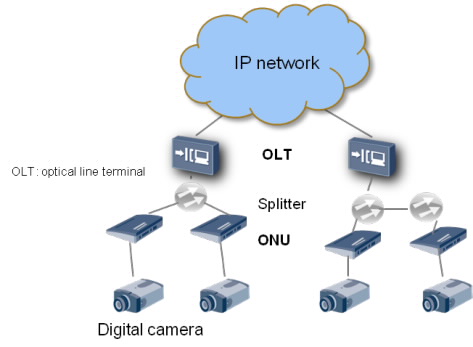
Huawei has released multiple optical network unit (ONU) models that provide the passive optical network (PON) access service for video surveillance terminals. These ONU models provide 2/4/8/16/24 downstream interfaces. They support the PoE function, providing power supply for video surveillance terminals using category 5 cables. This function reduces the customer's investments, alleviates reliance on mains power supplies, and accelerates deployments.
These ONU models also support plug-and-play (PnP) service provisioning, which performs configuration remotely and automatically. After devices are powered on and successfully registered, management channels and service channels are set up immediately, without the need for on-site manual configuration.
These ONU models can be managed efficiently with multiple management and maintenance methods, such as remote acceptance, patch installation, upgrade, and fault location. All are completed without the need for on-site software commissioning.
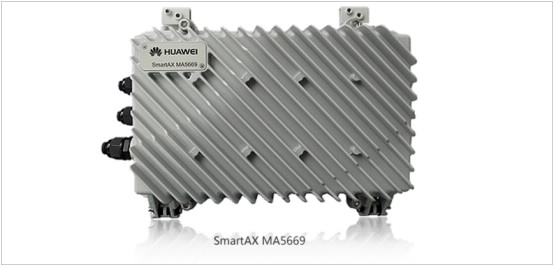
3 Solar Power Solution for Video Surveillance
With the popularity of video surveillance, monitoring points are increasingly deployed to remote locations. But there are lots locations without grid power or with unstable grid power, such as remote rural, outlying islands. These locations are suitable to deploy solar power solution. In addition, with the improvement of the global energy conservation awareness, more and more countries involve green energy especially solar power. In the region with rich sunlight resources, solar power solution is a better way for the power of video surveillance.
The picture is the case of the solar power solution for video surveillance. In this case, the camera collect video stream; AP communicate with remote site; the solar panel transfer the solar power to DC; the control system make the control for the entire system and provide power supply for the camera and AP with PoE adapter; the battery storage the energy and supply the power for the camera and AP when the solar power is short.
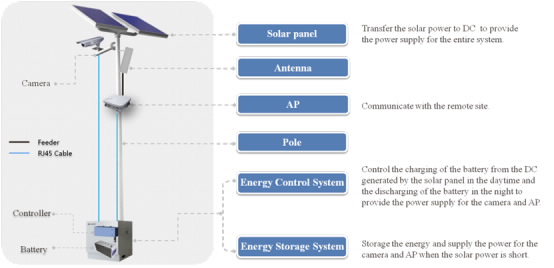
The highlights of the solution:
- Intelligent control system improved the solar power utilization rate of 19%.
- High reliability: high temp endurance (Max 50℃); High Wind Resistance (144KM/Hour, Level 12); High Electrical Safety Inside; High Anti-theft Level.
- Easy deployment: all in one cabinet design, saving footprint of 50%.
4 Video Surveillance Network Solution Scenarios
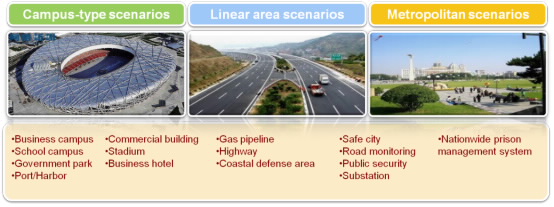
Huawei has designed different video surveillance network solutions for various scenarios. These solutions provide premium, secure video surveillance services by implementing hierarchical, high-reliability design, comprehensive security design, and QoS assurance that is based on hardware probes.
- Campus-type scenarios: Campus scenarios include but are not limited to stadiums, campuses, and buildings. In these scenarios, LAN access is used for places where routing cables is convenient and WLAN access for places where routing cables is difficult. This hybrid wired and wireless access approach provides a varied set of network access modes. For large campus-type scenarios, a 10GE campus network that features "GE access, 10GE aggregation, and 40GE core" design is used. The 10GE campus network provides high-density, large-bandwidth video surveillance services.
- Linear area scenarios: Scenario sites include gas pipelines, highways, railways, and other places where surveillance sites are distributed along a curvilinear shape, and surveillance coverage is large, at long distances, and with highly dense activity in some parts. For surveillance lines less than 10 km long, WLAN access is used to reduce cable routing costs and simplify deployment. For 10 to 60 km lines, xPON access is recommended. For lines longer than 60 km, PON over OTN is preferred.
- Metropolitan scenarios: In metropolitan areas, Huawei provides flexible end-to-end access, aggregation, and backbone networks for video surveillance. The backbone network is equipped with high-performance routers, and the aggregation layer is deployed with full-featured switches. The switches are connected using virtual private network (VPN) technologies, including virtual private LAN service (VPLS) and virtual leased line (VLL). The access layer primarily uses LAN access technologies. xPON is used for cameras located at faraway places. WLAN access is deployed in areas where optical fiber is inapplicable. APs that support bridging functions are used for cameras that do not support wireless functions.
Holistic Network Solution
Huawei provides multiple network access modes, including LAN, WLAN, and xPON access and their combinations, to support diverse scenarios.
In a larger sense, Huawei provides a variety of comprehensive network solutions for different video surveillance application scenarios, such as 10GE campus network, hybrid wired and wireless network, flexible xPON network, high-speed backbone network, high-reliability WAN interconnection network, and comprehensive security network.

High-quality Video Surveillance Services
Huawei offers a high-quality service assurance system for video surveillance with many measures for the network side, such as the following:
- Large-cache, high-accuracy switch network: Huawei switches support a maximum 1.25 GB cache, with a data caching time up to 200ms. The port density and cache performance of these switches are among the top in the industry. The switches ensure no packet loss even in case of large traffic bursts for video surveillance services. The 64K hardware queues can be allocated flexibly based on ports and services, to refine the services control.
- VLAN isolation technology and end-to-end QoS deployment: When the video surveillance services share the same network resources with other services, Huawei uses VLAN technology to isolate them from each other and deploys an end-to-end QoS scheme to provide resource assurance for video surveillance services.
- End-to-end QoS monitoring: Huawei solutions use hardware probes to monitor delay, jitter, and packet loss for video surveillance services. QoS data of all services in the entire path can be displayed on the network management system (NMS) interface, to help locate faults quickly. Hardware probes do not occupy any CPU resources, and the probe accuracy is 20% higher than that of software probes.
- Reverse tree multicast structure: The reverse tree multicast design can distribute video surveillance streams more efficiently, reducing network congestion and alleviating burden on PUs. Intelligent routing for network multicast ensures real-time traffic distribution in a large network.
Hierarchical and Reliable Network
Huawei solutions adopt hierarchical reliability design, as shown in the following examples:
- At the equipment level, Cluster Switch System (CSS) and iStack technologies ensure no network loops.
- At the link level, hardware-based Bidirectional Forwarding Detection (BFD)/ETH OAM can detect faults quickly.
- At Layer 2 network level, SEP/G.8032 technologies ensure network convergence within 50ms.
- At Layer 3 network level, intelligent routing and link switching technologies ensure that video surveillance services are stable.
Comprehensive Network Security Design
Huawei provides comprehensive network security schemes to secure video surveillance services, including:
- Network border security scheme: securely isolates different network areas.
- User terminal security scheme: performs user authentication, authorization, and management.
- At Layer 2 network level, SEP/G.8032 technologies ensure network convergence within 50ms.
- Remote access security scheme: ensures the security of remote user access.
